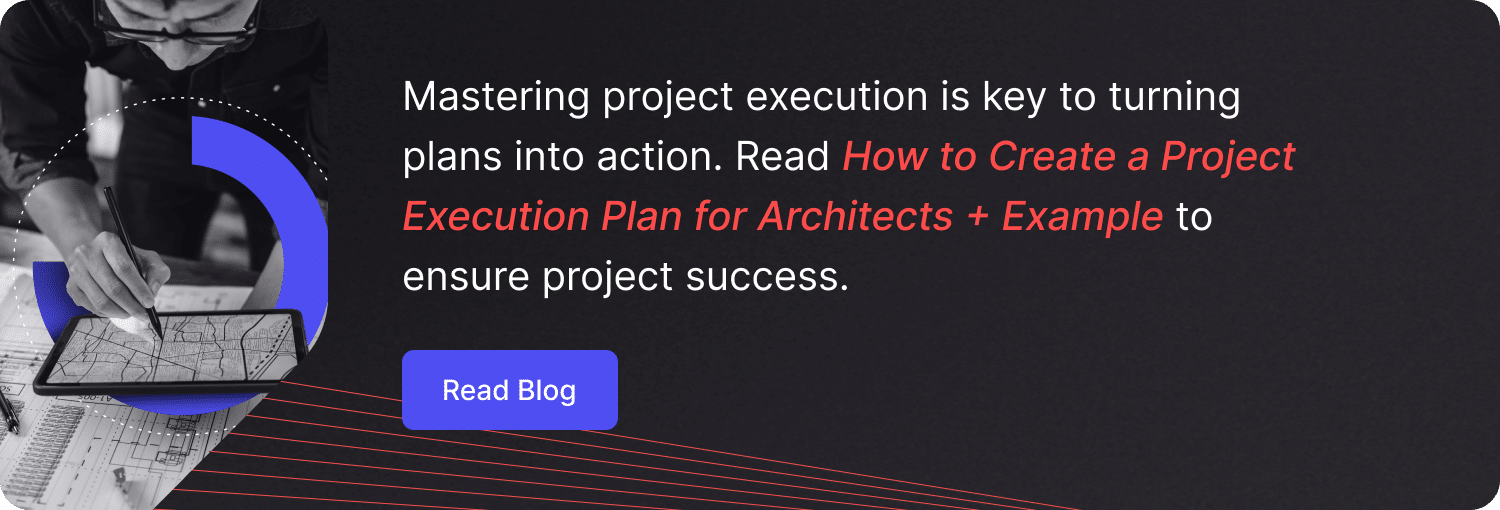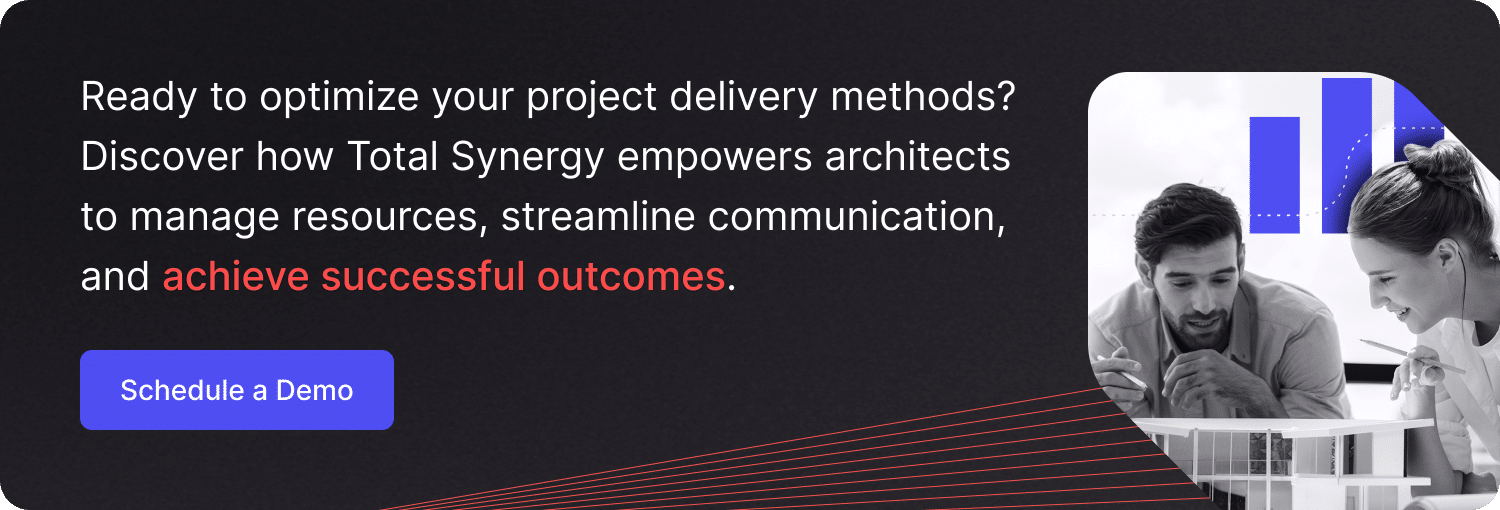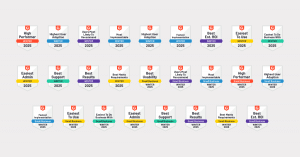Selecting the right project delivery method can make or break an architectural project. It impacts timelines, budgets, collaboration, and ultimately, the success of the entire process. For architects, understanding the various project delivery methods is essential to navigating these challenges and aligning the project team with the client’s goals.
In this article, we explore the most common project delivery methods, their benefits and drawbacks, and how architects can approach them strategically.
What Are Project Delivery Methods?
Project delivery methods are structured approaches that define how a construction project is designed, contracted, and built. These methods establish roles, responsibilities, and the flow of communication between all stakeholders, including architects, contractors, and clients.
By selecting the appropriate delivery method, architects can ensure alignment with the project’s goals, budget, and timeline. Common methods include design-bid-build, design-build, integrated project delivery, and more, each offering unique benefits and challenges depending on the project’s complexity and requirements.
The 6 Best Project Delivery Methods for Architects
Different projects call for different approaches. Here are the 6 most commonly used project delivery methods in architecture:
1. Design-Bid-Build (DBB)
This is the traditional approach to project delivery. The architect completes the design, then contractors bid on the project, and construction begins. It separates design and construction responsibilities, giving the client full control over selecting the contractor.
Pros: Clear process, competitive bidding for cost control, well-suited for straightforward projects.
Cons: Potential for adversarial relationships between architect and contractor, longer timelines.
2. Design-Build (DB)
In this method, the architect and contractor work together under a single contract. This integrated approach allows for greater collaboration and can shorten timelines by overlapping design and construction phases.
Pros: Streamlined communication, faster project delivery, reduced risk of disputes.
Cons: Less client control over contractor selection, potential conflicts of interest.
3. Construction Manager at Risk (CMAR)
The construction manager is engaged early and collaborates with the architect during the design phase, providing cost estimates and constructability reviews. The construction manager guarantees the maximum project cost, taking on financial risk.
Pros: Early cost certainty, collaboration between architect and construction manager.
Cons: Higher upfront fees, less competitive bidding.
4. Integrated Project Delivery (IPD)
IPD emphasizes collaboration and shared accountability. All stakeholders, including the architect, contractor, and client, enter into a single contract to share risks and rewards.
Pros: Encourages teamwork, minimizes conflicts, and enhances efficiency.
Cons: Requires strong trust and communication, best suited for large or complex projects.
5. Owner-Build
In this approach, the owner takes on the role of both client and contractor, directly managing construction and hiring the necessary teams. Architects provide support as needed.
Pros: Full owner control, potential cost savings.
Cons: High owner involvement and expertise required, increased risk of delays.
6. Public-Private Partnerships (PPP)
Often used for large-scale infrastructure projects, PPPs involve collaboration between public entities and private companies. Architects work within a broader team of stakeholders to achieve project goals.
Pros: Access to private funding, alignment of public and private interests.
Cons: Complex agreements, lengthy approval processes.
Choosing the Right Project Delivery Method
Selecting the best delivery method depends on several factors. Architects play a key role in guiding clients through this decision-making process. Consider these aspects:
• Project Size and Complexity: Large, intricate projects often benefit from integrated project delivery or construction manager at risk approaches, while smaller projects may suit design-bid-build.
• Budget Constraints: Design-Build can reduce costs by streamlining processes, while design-bid-build ensures competitive pricing through bidding.
• Timeline Requirements: Tight deadlines may favor methods like design-build, which overlap design and construction phases.
• Client Goals: Understand what matters most to the client—cost control, speed, or collaboration—and tailor your recommendation accordingly.
Design-Build vs. Design-Bid-Build: Key Differences
These two methods are among the most common in architectural projects, but they differ significantly:
Design-Bid-Build (DBB)
Architects maintain independence, and clients have full control over contractor selection. However, the separation of design and construction phases can lead to longer timelines.
Design-Build (DB)
Integrates design and construction under one contract, fostering collaboration and reducing timelines. However, clients may have less say in contractor selection.
When to Choose
• Use DBB for projects requiring clear separation of responsibilities or when clients want competitive bidding.
• Use DB for fast-paced projects or when a unified team approach is beneficial.
Integrated Project Delivery: Collaboration at Its Best
Integrated project delivery (IPD) is gaining traction for its collaborative approach. By aligning all stakeholders under a single contract, IPD emphasizes shared goals, risks, and rewards. Architects thrive in this method as it promotes teamwork, minimizes disputes, and drives innovation.
Benefits of IPD
• Early involvement of all parties ensures better decision-making.
• Streamlined communication reduces delays and misunderstandings.
• Shared accountability encourages efficiency and high-quality outcomes.
While IPD is best suited for large or complex projects, it can be adapted to smaller ones with the right tools and mindset.
Best Practices for Project Architects
Regardless of the delivery method, architects can ensure success by following these best practices:
• Enhance Communication: Establish clear channels between all stakeholders to avoid misunderstandings and ensure alignment.
• Understand Client Goals: Always keep the client’s priorities at the forefront, whether it’s cost, speed, or design quality.
• Stay Flexible: Be prepared to adapt as challenges arise, especially when working within integrated or collaborative methods.
• Leverage Technology: Use project management tools like Total Synergy to track timelines, budgets, and communications seamlessly.
How Project Management Software Supports Delivery Methods
Project management software plays a crucial role in ensuring the success of various project delivery methods. Tools like Total Synergy help architects streamline communication, track progress, and manage resources effectively across teams.
Benefits of Using Total Synergy:
• Centralized Collaboration: Keep all stakeholders aligned with real-time updates and shared documents in one platform.
• Resource Management: Allocate manpower, materials, and budgets efficiently while preventing overages or delays.
• Timeline Tracking: Monitor schedules and milestones to ensure the project stays on track, regardless of the delivery method.
• Document Control: Maintain up-to-date plans, approvals, and specifications accessible to the entire team from anywhere.
• Reporting and Analytics: Generate professional reports with data-driven insights to keep clients and stakeholders informed.
With Total Synergy, architects can enhance efficiency and deliver better outcomes, regardless of the chosen delivery method.
Summary: What are the Project Delivery Methods?
Architects have multiple project delivery methods to choose from, each with distinct advantages and challenges. From the traditional Design-Bid-Build to modern Integrated Project Delivery, selecting the right approach depends on project size, complexity, budget, and client priorities. Tools like Total Synergy empower architects to manage communication, resources, and timelines efficiently, ensuring successful outcomes for any delivery method. By mastering these methods, architects can guide clients effectively and deliver projects that meet their vision and goals.
Frequently Asked Questions About Project Delivery Methods
What is the most popular project delivery method?
The Design-Bid-Build (DBB) method is the most commonly used due to its straightforward approach, separating design and construction responsibilities while allowing for competitive bidding.
What is delivery method in project management?
A delivery method in project management defines how a project is planned, designed, and executed, establishing roles, responsibilities, and workflows among stakeholders.
How do you choose the best project delivery method?
Choosing the best delivery method depends on factors like project size, complexity, budget, timeline, and client priorities. Architects help tailor the decision to specific needs.
What are the advantages of the design-build method?
The design-build method combines design and construction under one contract, streamlining communication, reducing timelines, and minimizing potential conflicts.
What is Integrated Project Delivery (IPD)?
Integrated Project Delivery (IPD) emphasizes collaboration by aligning all stakeholders under a single contract, sharing risks and rewards for better outcomes and efficiency.
What role do architects play in project delivery methods?
Architects guide the project by ensuring the chosen delivery method aligns with goals, balancing design intent, timelines, and budget while coordinating with stakeholders.





